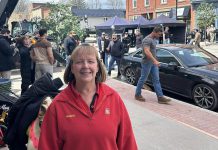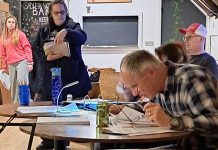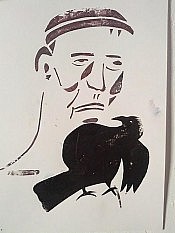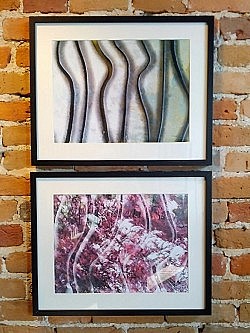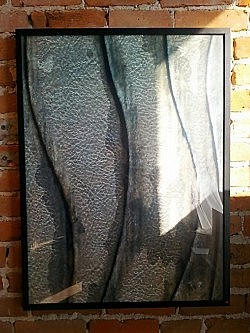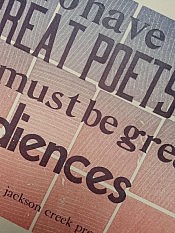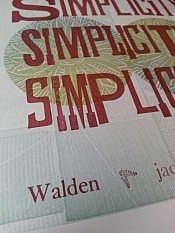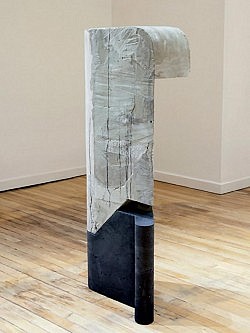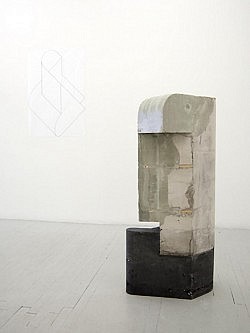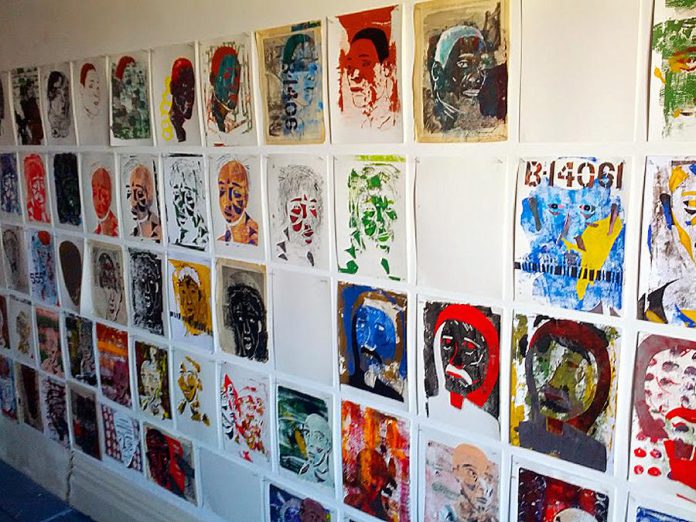
This month, Michael profiles artist Brian Nichols, whose work is on display at Gallery at the Attic in Peterborough, along with exhibits by Joe Stable and Janet Howse. He also features work by Jeff Macklin at The Pastry Peddler and by Jen Aitken at Evans Contemporary.
“Preferring Not To See” by Brian Nichols at Gallery in the Attic
Stephen King wrote: “The most important things are the hardest to say. They are the things you get ashamed of, because words diminish them.” Artist and psychotherapist Brian Nichols has made a life of overcoming that impasse. His work reflects profound experience in coming to terms with, and expressing, those things we find hardest to say. Things we prefer not to talk about. Things we prefer not to see.
This month, the walls of the back room of Gallery in the Attic are lined by dozens of Nichols’ silk-screened faces. Images of people whose lives — and deaths — he has connected with. The exhibition forms an intimate mosaic of relatedness and feeling. It is a deep meditation on what it means to be human; a reflection on living that includes the suffering and death that many of us choose to avoid.
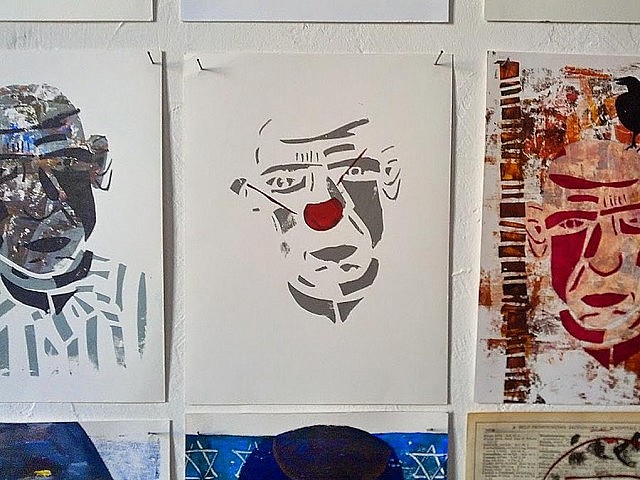
“I’m not terribly interested in making art that doesn’t affect me,” he explains. “I guess there’s a naïve part of me, or an interesting part of me, that would like to see if it can affect others.”
About once a year for the last decade, Nichols has travelled to volunteer at a hospital in rural Zimbabwe to care for people, many of whom are dying from AIDS-related illnesses. He’s also been a volunteer for palliative care patients at Hospice Peterborough for 30 years. He’s experienced violence in Jerusalem, done work helping girls escape rape in post-earthquake Haiti, and has a private practice where he often provides therapy for children who have been sexually abused. He’s fairly steeped in encounters that most of us might consider too overwhelming to be borne.
Art making has become a major conduit through which he transforms and interprets his experiences and those of others. He uses the process to reveal the truth of the person. It is at the heart of his practice and his life.
In addition to the years of psychotherapeutic connection he has had with expressive arts therapy, Nichols has consistently attended many workshops to develop his own art making and technique. The content of his work comes from a deep experience of connection with others.
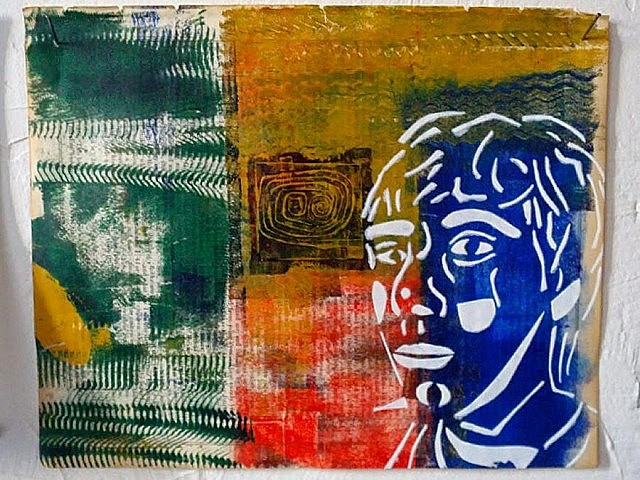
Painting and art making became part of the process of grounding himself at home after trips to Zimbabwe. He began to create work both to document his experience, and to relate it to others. All of the proceeds from any work he sold went to benefit people in Zimbabwe.
Then two events shook up his world and left him grasping for answers. His volunteer work in Zimbabwe was in jeopardy when services at the hospital were threatened and, at the same time, he became caught up in a difficult court case through his work as a therapist.
“For two years I was in this huge struggle around truth, around justice,” he says. “What’s my role? How involved am I supposed to be? This desire to both be an advocate to work for justice, and also to run away and hide. [I was] struggling with my belief that there was good in the world.”
During this challenging period he stopped painting and creating, but eventually he turned to silk-screening. Ten images became 20. Five faces became 25 faces. He continued to produce the same stencils over and over again; the same faces, but with different feelings connected to them.
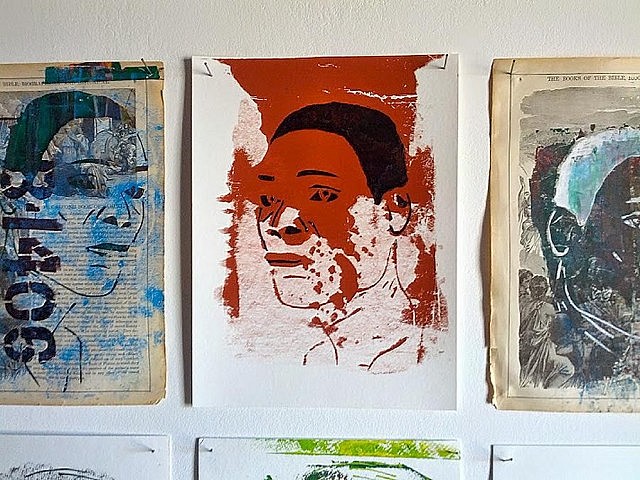
This process of exploration took him to an island off the coast of Newfoundland for a time, living in a shed and doing self-portraits. These self-portraits, too, became part of the work, turning into stencils, adding his own face to the succession of others.
He describes a revelation of sorts, “I started to, in a Buddhist kind of way, or some kind of way, collapse the difference between me and “the other”. It just became suffering, all of our suffering.”
This is the entry point to see where Nichols is coming from. There is an opportunity to see yourself reflected in these images. It speaks to the universality and the breadth of our experience, suffering included.
Writer Thomas Merton perhaps came closest to putting the truth of this irony into words: “The more you try to avoid suffering, the more you suffer, because smaller and more insignificant things begin to torture you, in proportion to your fear of being hurt. The one who does most to avoid suffering is, in the end, the one who suffers most.”
“Preferring Not To See” is on display at Gallery in the Attic (140 1/2 Hunter St. W., Peterborough) until March 28th. The gallery is open Tuesday to Saturday from 12 to 5 p.m. For more information, call 705-868-1162, email galleryintheattic@gmail.com, or visit www.facebook.com/GalleryintheAttic.
Nichols is also a part of a three-part series of “Death Cafés” offered by Hospice Peterborough encouraging conversations between people on this often taboo subject.
The second installment of the Hospice Peterborough series, “Unspeakable Deaths: deaths we don’t or can’t talk about”, is held in conjunction with Nichols’ exhibit and takes place at Gallery in the Attic on Tuesday, March 10th from 7 to 9 p.m. It will be an interactive evening involving art, music, and poetry. Drinks will be available for purchase.
The third installment of the series, “Different Approaches to Dying: exploring dying from a multicultural perspective”, will be held at The Whistle Stop Café (141 Charlotte St., Peterborough) on Tuesday, April 7th from 7 to 9 p.m.
For more information on the evenings of conversation, please contact Hospice Peterborough at 705-742-4042 or email David Kennedy at dkennedy@hospicepeterborough.org.
Photos by Michael Fazackerley for kawarthaNOW.
“New Trunks” by Joe Stable at Gallery in the Attic
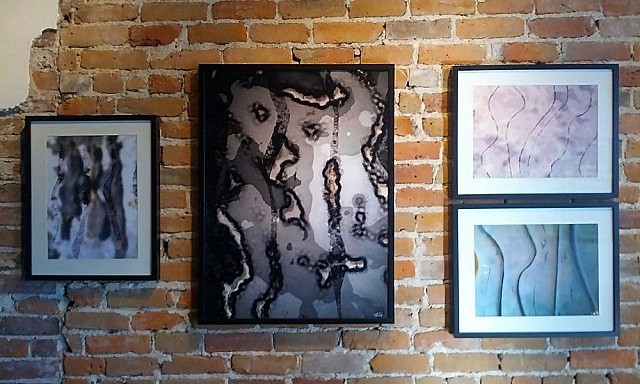
Having recently read a commentary on the art market explosion of Neo-Modernism chic, I wonder if he isn’t aping the popular style for the sheer fun of it. Given his acme ingenuity, it might be equally true to say that he’s subsumed all that bluster and transcended it in one fell swoop. Or probably it’s more likely he’s ignored it altogether, and continued doing his own thing just as he’s always done. Something which Stable seems to be famous for.
“New Trunks” is on display at Gallery in the Attic (140 1/2 Hunter St. W., Peterborough) until March 28th. The gallery is open Tuesday to Saturday from 12 to 5 p.m. For more information, call 705-868-1162, email galleryintheattic@gmail.com, or visit www.facebook.com/GalleryintheAttic.
Photos by Michael Fazackerley for kawarthaNOW.
“Fade We Must” by Janet Howse at Gallery in the Attic
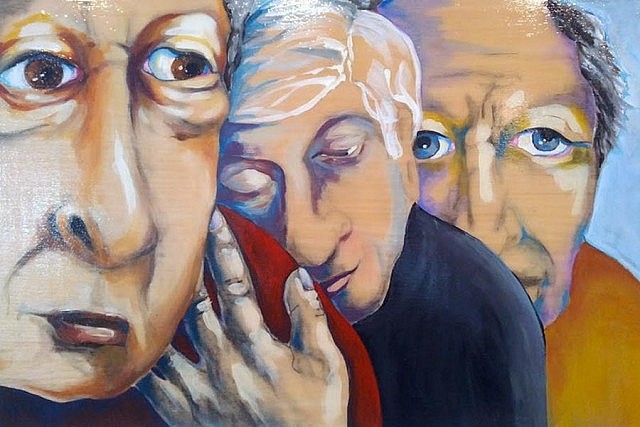
Howse took her experience as a Recreation Therapist specializing in art programming for dementia and created The Work of Art, a user-friendly and adaptable system for using art as a tool for dementia care. You can read my previous article about that here.
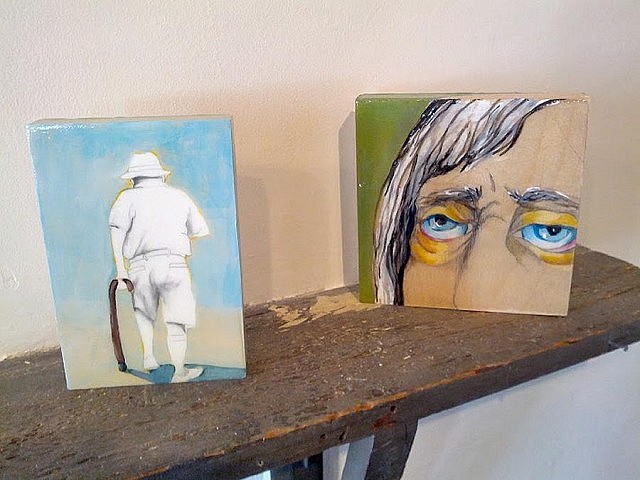
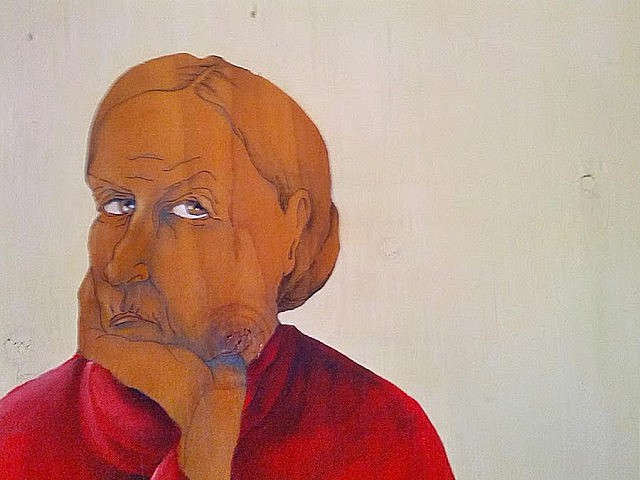
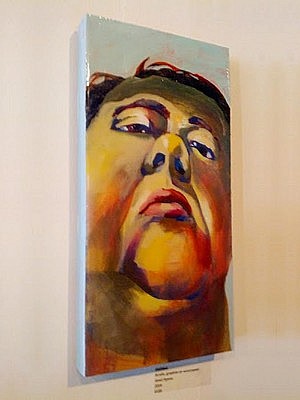
I’m tempted to call them portraits but, since they’re an amalgamation of people depicting someone who doesn’t exist, I’m not sure that’s quite right to say. One could easily be fooled. Many of the expressions are so real, expressive, and convincing that it seems they must be reflections of someone’s specific personality.
The realities of dementia are that it’s an anguish-inducing process that robs people of these very qualities. Howse doesn’t shy away from this. Some of her works are stark but tender portrayals of decline; but she also displays a masterful hand at illuminating those occasional flickers of the person who was.
“Fade We Must” is on display at Gallery in the Attic (140 1/2 Hunter St. W., Peterborough) until March 28th.
The gallery is open Tuesday to Saturday from 12 to 5 p.m. For more information, call 705-868-1162, email galleryintheattic@gmail.com, or visit www.facebook.com/GalleryintheAttic.
Photos by Michael Fazackerley for kawarthaNOW.
“21 Letterpress Prints Hanging on a Wall” by Jeff Macklin at The Pastry Peddler

The movable type enthusiast’s wide-ranging interests in letterpress techniques all get some play here. Relief printing, texture, negative space and words, and a full roster of his bits and bobs are united by Macklin’s distinctive style and some hellbox type. His consummate expertise with these media permits him to craft infectiously appealing pieces featuring Canadiana themes and favourite quotes.
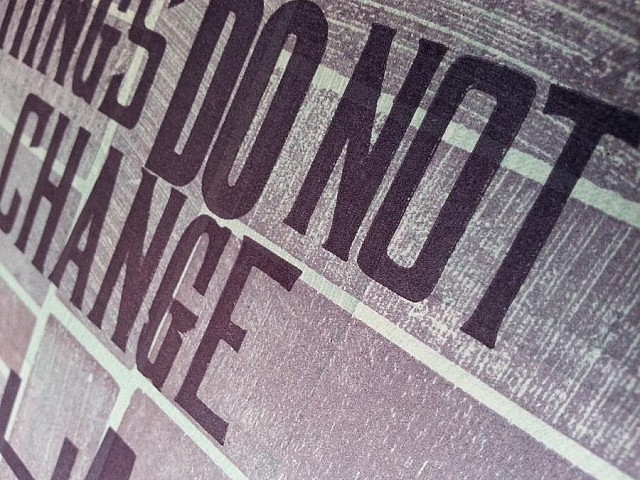
A little sojourn to The Pasty Peddler (36 King St E, Millbrook) is a welcome bit of café bliss for anyone in the area. Macklin’s exhibition will be gracing their walls all this month.
The Pastry Peddler is open from Tuesday to Friday from 9:30 a.m. until 6 p.m., and Saturday 10 a.m. until 5 p.m. For more information, call 705-932-7333.
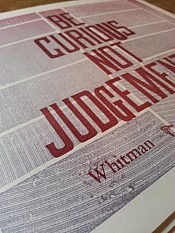
Photos courtesy of Jeff Macklin.
“Lines and Planes” by Jen Aitken at Evans Contemporary
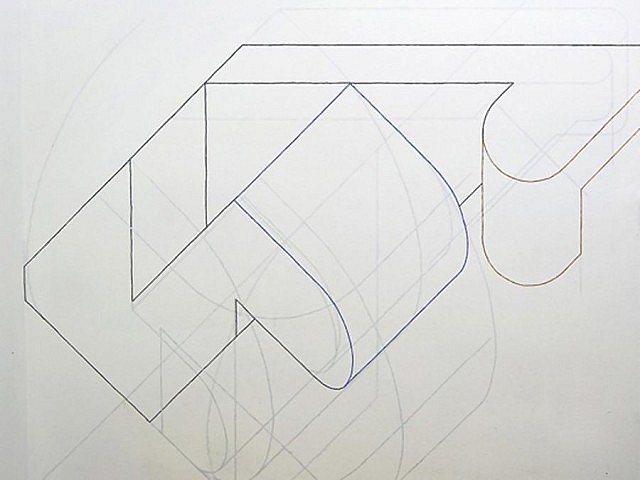
Nevertheless, brutal seems an apt description for the architectural movement’s lack of concern for looking comfortable or easy. You’ll find examples of it in most Canadian cities; Trent University has several buildings that ascribe to its aesthetic, and the Charlotte Towers apartments are another example in Peterborough.
Artist Jen Aitken has taken this conceptual framework and used it to pit material and structural fact against each other in an Escher-esque battle of construction and design.
Working within the confines of 90 and 45 degree angles and their rotations, Aitken has created concrete objects and drawings that are suggestive of blueprints and the Brutalist doctrine. Her exhibition is a site-specific construction that uses the architecture of the gallery to immerse you in a vision of the how sculptural composition can alter your perception of space.
“Lines and Planes” opens with a reception on Thursday, March 12th from 6 to 10 p.m. The show runs until April 9th.
Evans Contemporary (302 Pearl Ave., Peterborough) is open for viewings between 5:30 and 8 p.m. on Wednesday and Thursday evenings. Viewings can also be made by appointment. For more information, email evanscontemporary@gmail.com or visit www.evanscontemporary.com.
Photos courtesy of Evans Contemporary.






